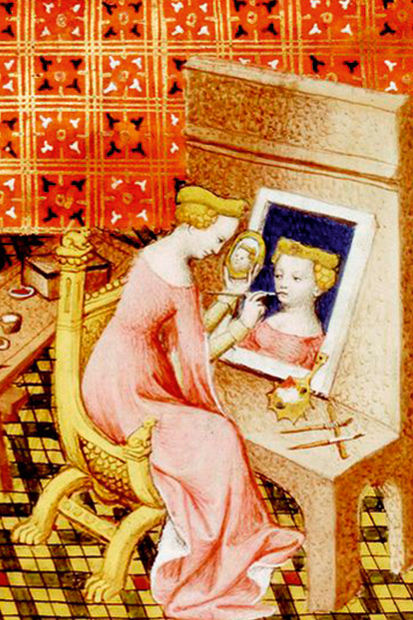If ever there was a time to write a book about self-portraits, this must be it. ‘Past interest in the genre,’ James Hall tells us in his introduction to this cultural history, ‘is overshadowed by the obsession with self-portraiture during the last 40 years.’ What he could not have foreseen was that self-portraiture would feature in the mainstream news as never before over the last six months or so.
Firstly, the Oxford English Dictionary announced that ‘selfie’ was their word of the year for 2013, spawning a noisy debate about photographic self-portraiture. Next, David Cameron, Barack Obama and Helle Thorning-Schmidt were spotted taking a selfie at Nelson Mandela’s memorial service — an act that merited global news coverage. And throughout this time the National Portrait Gallery in London has been pursuing a high-profile campaign to save a late Van Dyck self-portrait from export, a campaign which, thanks to the Duchess of Cambridge, has now reached the pages of Hello!
Topical it might be, but modish this book is not. Ranging from Akhenaten’s chief sculptor to Tracey Emin and drawing on art-historical, historical, philosophical and literary sources covering the three-and-a-half millennia of the intervening period, this is a stimulating and demanding book that requires an equally serious engagement from any reader.

Hall has devised a Linnaean system of classifying self-portraits, neatly dovetailing types with a chronology that begins in earnest with medieval manuscripts, looks at the development and use of mirrors, the artist’s social standing and the many purposes, artifices and psycho-dramas into which this most apparently straightforward genre can blossom.
The basic questions addressed in this book are the why and how of self-portraiture, and ranging widely in time and medium from the Christ-like image of Dürer and a gorgeous Artemisia Gentileschi to the ceramic jug portrait of Paul Gaugin, the multiple Antony Gormleys and the bizarre photograph of John Coplans that reduces him to a box with a couple of antennae, Hall’s work explores a series of case studies which seeks not so much to answer these questions as to identify the highlights, connections and points of departure in an evolving story.
There is no questioning the scholarship that lies behind this book, and although in his close readings of paintings there is inevitably room for disagreement, Hall’s intuitive observations often neatly hit the mark. Many of the images will be well known — the godfathers of self-portraiture, Rembrandt and Van Gogh, get their due — others will be less familiar. The life-size self-portrait of the late 15th-century sculptor Adam Kraft, crouching on the ground in St Lorenz’s church, Nuremberg and bearing on his back a 20-metre high ‘Sacrament House’, must be a sight to behold. As must Giovanni Paolo Lomazzo’s repellent self-portrait as the Abbot of the Accademia della Val di Blenio, described by Hall as ‘sultrily prepubertal — a knowing child prodigy’. And who would not like to have said that Rembrandt’s face, in his later self-portraits, ‘emerges into the light like a potato from peaty soil’.

Like so many art books, this one could do with more illustrations. Its handy size — suggesting a book to be read rather than one to be dipped into for the pictures — is a blessing, but the selection of images must have necessitated a painful process of weeding out. Michelangelo Cerquozzi’s double-sided portrait of a connoisseur, for example:
He is a dapper youth holding out a piece of paper with a flourish…. on the reverse Cerquozzi has painted the same scene from behind the sitter, and now, looking out at us, we see a grotesque self-portrait of the craven money-grabbing painter grinning and wearing the crown of Midas.
Fascinating, but even more so if we could see it.
Self-portraits are not per se interesting, other than for their documentary value. A dull self-portrait is a dull painting — even the great Medici collection of self-portraits housed in the Vasari Corridor in the Uffizi in Florence, when cut down to a standard size and hung in regimented rows, must, as Hall suggests, have been peculiarly dispiriting, ‘like a catacomb or prison for painters’. But a good self-portrait has, as he also demonstrates, an interest beyond the medium itself — it is a conscious or subconscious manifesto for the artist’s work, his life and his times.
This book will give you chapter, verse and line and if it’s further illustration that is required, simply drop in to the National Portrait Gallery and have a look at the glorious Van Dyck. Hall may well have been lucky in his timing, with all the contemporary focus on his subject; but so too are we to have almost within our grasp one of the most eloquent examples of the genre explored here in such depth.






Comments